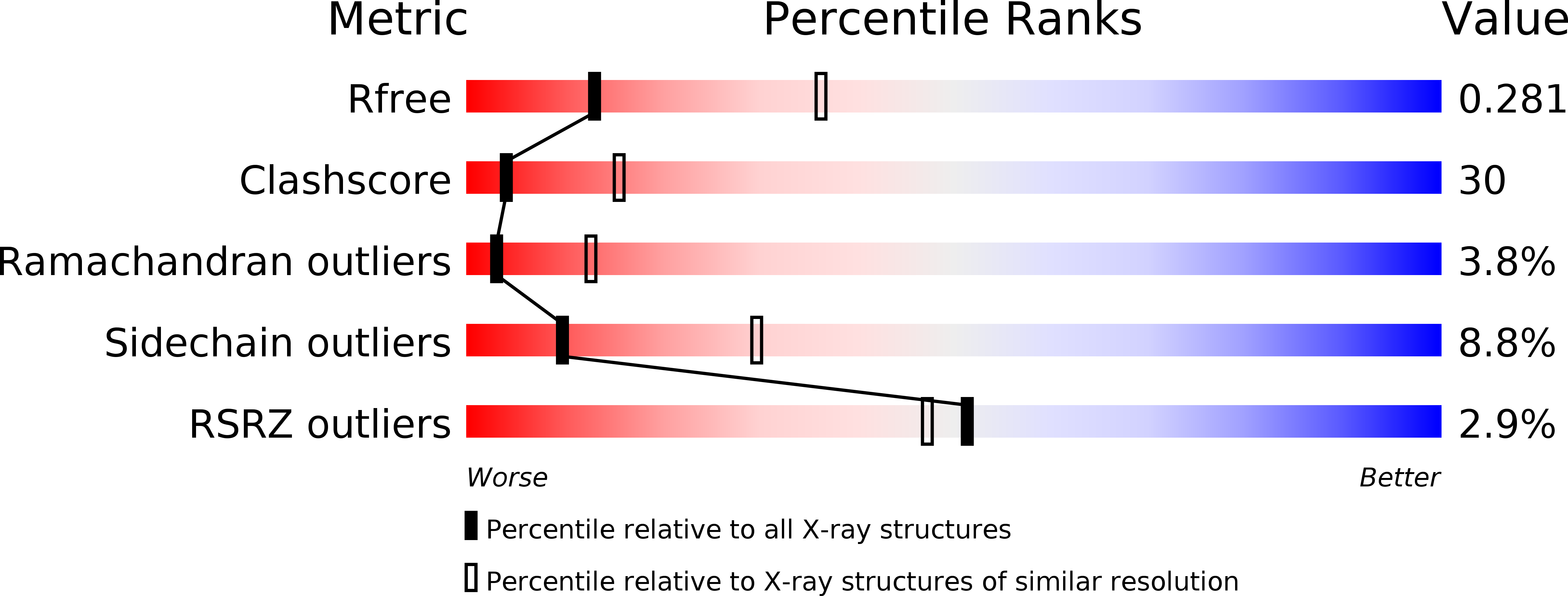
Deposition Date
2010-08-03
Release Date
2011-02-02
Last Version Date
2023-09-06
Entry Detail
PDB ID:
3O8O
Keywords:
Title:
Structure of phosphofructokinase from Saccharomyces cerevisiae
Biological Source:
Source Organism:
Saccharomyces cerevisiae (Taxon ID: 4932)
Host Organism:
Method Details:
Experimental Method:
Resolution:
2.90 Å
R-Value Free:
0.30
R-Value Work:
0.25
R-Value Observed:
0.25
Space Group:
P 21 21 21


